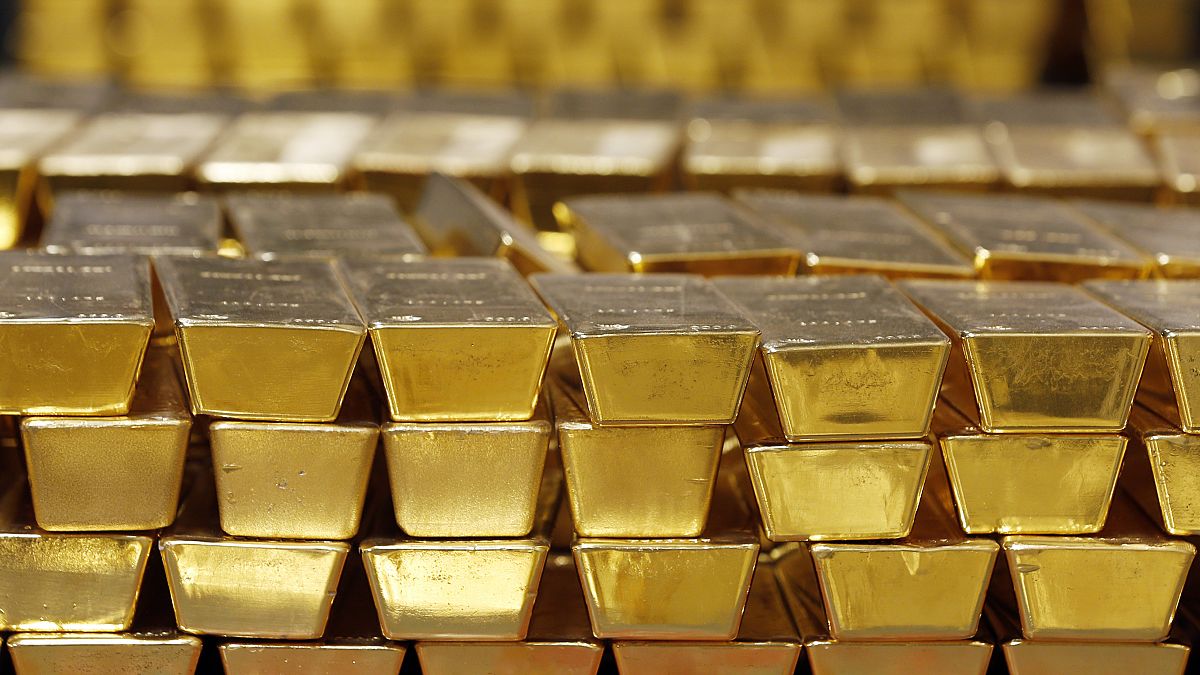After two lackluster years, gold is staging an impressive comeback in 2023, with the precious metal delivering double-digit gains by the end of November, inching closer to its all-time highs of $2,060 per ounce reached in August 2020.
The price of gold climbed above $2000 at the end of November with the precious metal reaching $1,247 per ounce in early trade on Monday 27, and it continues to hover above and around the $2000 amrk this week too, as the end of the Hamas-Israel ceasefire sent investors flocking to buy the safe haven asset.
Following a dip to $1,820 per ounce on 5 October, a confluence of factors has aligned to create a favorable environment for gold's resurgence. Here's a close look at what they are.
Geopolitical tensions ignited by a conflict in the Middle East, coupled with a continuing decline in inflation rates in the United States, have propelled a remarkable rally in gold prices.
Anticipation of rate cuts sparks gold rally
Anticipation has played a pivotal role in sparking the rally in gold's price, as the metal is influenced by market expectations of future Fed policy.
With the ongoing sharp deceleration of inflation in the United States and in response to the Federal Reserve's recent decisions to refrain from raising interest rates, market participants are increasingly leaning towards the expectation of the Fed implementing earlier and more pronounced rate cuts in 2024.
By the end of November 2023, market-implied probabilities of future Federal funds rates, as gauged by the CME Group's Fed Watch tool, indicate a near 75% chance of a rate cut as early as May 2024.
Investors are currently factoring in four rate cuts by December 2024, assigning a probability of 77%.
Gold's appeal? A hedge against economic stress
Gold's appeal grows stronger as interest rates fall for various reasons. Firstly, the yields offered by short-term government bonds, a competing safe asset for gold, tend to decline. Lower expected returns on cash drive investors to seek better alternatives. Additionally, when interest rates drop due to economic slowdowns or recessions, stocks may struggle to provide positive returns.
Gold ultimately serves as a hedge against economic risks and fear, offering a unique diversification quality to investor portfolios as it is uncorrelated with bonds and stocks.
As the US presidential election looms in November 2024, and the potential for a fiercely contested campaign between President Joe Biden and Republican challenger Donald Trump, the presence of political uncertainties could provide further bolstering for gold prices.
A recent study conducted by WisdomTree reveals that gold tends to perform well in times of economic stress. When economic activity takes a sharp downturn, gold often performs positively while equities tend to underperform. Gold also outperforms Treasuries, which are considered competing defensive assets.
Investment demand for gold on the rise
The investment appetite for gold is on a pronounced uptick.
November witnessed an influx of about $1.5 billion in net inflows into the world's largest physically backed gold exchange-traded fund (ETF), the SPDR Gold Trust (GLD), as per data sourced from Vettafi's ETFdb.com.
This influx is not only the most substantial since March 2022 but also breaks a chain of five consecutive months marked by outflows, signifying the resurgence of investor interest in this precious metal.
Gold price outlook for 2024: What do experts think?
John Hathaway, Senior Portfolio Manager at Sprott Asset Management USA, Inc., expressed the view that "we believe gold may be poised for stronger performance in the coming months".
Hathaway voiced concerns about the Federal Reserve's commitment to a "higher for longer" interest rate stance, suggesting it could precipitate a broader credit deflation and recession. Lingering issues in the banking sector and labour market may further bolster gold's price trajectory.
Hedge fund investor Paul Tudor Jones shared on CNBC's Squawk Box that we are currently navigating "the most threatening and challenging geopolitical environment" at a time when the United States is grappling with its "weakest fiscal position since World War 2." He recommended that gold (as well as Bitcoin) should "probably constitute a larger portion of your portfolio than in the past."
If the Federal Reserve indeed opts for earlier rate cuts, the Bank of America has predicted that gold could culminate the year at an impressive $2,400 per ounce, marking an 18% surge from its current levels. This projection underscores the burgeoning promise of gold as a compelling prospect for investors in 2024.



